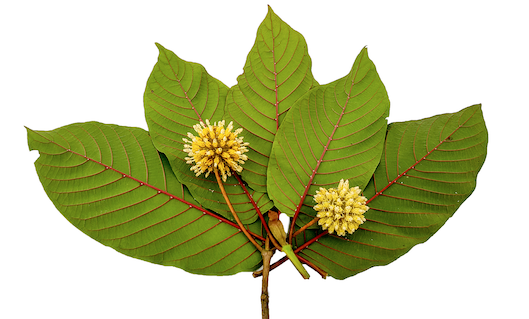When you’re reading the health and wellness news, you may have heard recently about a supplement called Kratom.
Before you jump into the next vitamin store and pick up a bottle, do your research!
You’re in luck, we’ve done a lot of the heavy lifting here.
Kratom – What’s all the buzz about?
With origins in Southeast Asia, Kratom is a supplement that’s extracted from the leaves of an evergreen tree within the coffee family. The supplement can be used as a liquid, or the leaves can be brewed. Kratom is most commonly used to boost your mood, relieve pain, and as an antidote for opioid withdrawal symptoms.
Other uses include muscle pain reliever, appetite suppressant, cramp relief and in treating panic attacks.
Sounds great right? Unfortunately, more research needs to be done.
First of all, this supplement is currently unregulated in the United States. Studies have shown that high doses, over an extended period of time, can be extremely dangerous.
It is unknown at what level Kratom is toxic in humans and overdose possibility is high.
While in low doses, it is known to have benefits such as increased energy and weight loss, due to the appetite suppression effects.
However, the side effects and negative risks may outweigh the potential benefits.
Known side effects include:
-
- Weight loss
- Dry mouth
- Chills, nausea, and vomiting
- Changes in urine and constipation
- Liver damage
- Muscle pain
- Dizziness
- Drowsiness
- Hallucinations and delusion
- Breathing suppression
- Seizure, coma, and death
Use for Opioid Withdrawal
One of Kratom’s major uses is to treat those suffering from opioid addiction and needing relief from withdrawal symptoms.
One of the main risk factors in using Kratom for withdrawal symptoms is that Kratom itself is an addictive substance and the more that you use it, the more that your body depends on that chemical reaction to help it “feel better”. Unfortunately, the longer Kratom is used, the more often individuals have shown symptoms similar to that of opioid use.
Long-term users develop a tolerance and need higher doses to see effectiveness. Without regulations in place, and other unknown factors, this type of use is extremely dangerous and can lead to overdose. Poison control in the United States claimed 1,800 reports involving kratom from 2011 to 2017, half of which resulted in seizures, high blood pressure, and even death. Essentially, the substance that is supposed to be helping, is actually causing extra health issues overall.
Without more research and regulations in place, the use of kratom (even at low doses), is still not advised. The potential for contamination, risk of addiction, and side effects when used with prescription drugs; as well as possible overdose outweigh the benefits associated with the supplement.
If you are interested in taking kratom for any reason, please seek advice from a medical professional. As with any new medication or supplement, ask your regular physician to ensure there should be no adverse reactions to any current medications or conditions in your medical history.
notes :
https://www.mayoclinic.org/healthy-lifestyle/consumer-health/in-depth/kratom/art-20402171
https://nccih.nih.gov/health/Kratom
https://www.ncbi.nlm.nih.gov/pmc/articles/PMC5402527/
Risks:
- High doses over a long period of time can be extremely dangerous. It is unknown exactly what level of kratom is toxic in people and it is possible to overdose.
- Long term use when taken for opioid withdrawal showed that individuals had similar symptoms to after opioid use.
- Can become addictive. Build up a tolerance and need higher doses for effectiveness.
- Has been reported to cause abnormal brain function when taken with prescription medicines.
- Can be contaminated with salmonella bacteria. As of April 2018, “more than 130 people in 38 states became ill with Salmonella after taking kratom.”
- Not regulated in the United States
- In 2016 the Drug Enforcement Administration announced intent to put kratom on in Schedule I (substances are defined as drugs with no currently accepted medical use and a high potential for abuse examples include: heroin and LSD.
Side effects outweigh potential benefits – Poison control in the United States received 1,800 reports involving kratom from 2011 to 2017. Half of which resulted in outcomes such as seizures, high blood pressure, and some even death.
Known side effects include:
- Weight loss
- Dry mouth
- Chills, nausea, and vomiting
- Changes in urine and constipation
- Liver damage
- Muscle pain
- Dizziness
- Drowsiness
- Hallucinations and delusion
- Breathing suppression
- Seizure, coma, and death
What is it?: supplement sold as mood booster, pain reliever, antidote for opioid withdrawal.
Comes from herbal extract from leaves of evergreen tree grown in Southeast Asia.
Leaves can be chewed or brewed. Liquid product is often marketed as a muscle pain reliever, appetite suppressant, and to stop cramps or diarrhea. Also has been sold as a treatment for panic attacks.
Stimulant – in low doses can make users feel more energetic.
Pain relief due to euphoria can be brought on by higher doses.
Extremely high doses = sedative and traditional Asian medicinal applications consider Kratom to be a substitute for opium.








